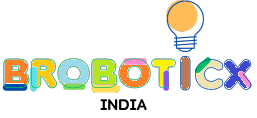Introduction
What is Arduino?
Arduino, a small yet mighty microcontroller, has become a game-changer in the world of electronics. It's a versatile open-source platform that empowers enthusiasts to bring their creative ideas to life through code and circuits.
Why use Arduino?
Arduino's charm lies in its simplicity and accessibility. Whether you're a coding prodigy or a tech newbie, Arduino welcomes you to the world of electronics without intimidating jargon. It's the perfect playground for turning your wildest tech dreams into reality. Certainly! Here's a key takeaway table summarizing the essential points from the article:
Key Takeaways |
|---|
| Introduction |
| - Arduino is a versatile microcontroller platform for electronics enthusiasts. |
| - Its simplicity and affordability make it an ideal choice for beginners. |
| - Arduino offers a supportive community and abundant online resources. |
| - Basic components include the Arduino board, LEDs, buttons, motors, sensors, and LCD screens. |
| - Getting started involves connecting your board, writing code, and uploading it using the Arduino IDE. |
| Beginner Arduino Projects |
|---|
| 1. Blink an LED |
| 2. Read a Button |
| 3. Control a Servo Motor |
| 4. Read a Temperature Sensor |
| 5. Display Data on an LCD Screen |
| 6. Build a Simple Robot |
| 7. Make a Home Automation System |
| 8. Create a Musical Instrument |
| 9. Build a Weather Station |
| 10. Make a Video Game |
| 11. Design a Custom PCB |
| 12. Build a 3D Printer |
| Tips for Beginners |
|---|
| - Start with simple projects and progress gradually. |
| - Embrace experimentation; mistakes are part of the learning process. |
| - Leverage online tutorials, books, and community forums for guidance. |
| - Don't hesitate to ask for help from the supportive Arduino community. |
| Conclusion |
|---|
| - Arduino's affordability and user-friendliness make it an excellent choice for beginners. |
| - The platform encourages creativity and offers endless possibilities. |
| Additional Resources |
|---|
| - Explore official Arduino websites and project hubs for tutorials. |
| - Check out recommended books and magazines for in-depth learning. |
| - Join Arduino communities and forums to connect with fellow enthusiasts. |
Benefits of using Arduino for beginners
- User-Friendly: Arduino offers a user-friendly environment for coding, making it an ideal choice for beginners.
- Affordable: Arduino boards are budget-friendly, making it easy for anyone to start experimenting with electronics.
- Vast Community: A vibrant community of Arduino enthusiasts and ample online resources ensure you're never alone on your learning journey.
Basic components of an Arduino project
Before diving into the projects, let's familiarize ourselves with the fundamental components of an Arduino project:
- Arduino Board: The brains of your project.
- LEDs: Light-emitting diodes for visual feedback.
- Buttons: Input devices to trigger actions.
- Servo Motors: Used for precise control of movement.
- Sensors: Devices like temperature sensors provide input to your projects.
- LCD Screens: Output devices to display information.
Getting started with Arduino
To embark on your Arduino adventure, you'll need an Arduino board, a computer, and the Arduino software (IDE). Connect your board, write your first "Hello, World!" code, and upload it to the board. Congratulations! You've just taken your first step into the exciting world of Arduino.
 |
| Arduino uno Photo by Spencer on Unsplash |
Beginner Arduino Projects
Now that you've dipped your toes into the Arduino waters, let's dive into some beginner-friendly projects:
- Blink an LED: The classic "Hello, World!" of Arduino projects.
- Read a Button: Learn how to interact with the physical world.
- Control a Servo Motor: Add movement to your projects.
- Read a Temperature Sensor: Dive into the world of environmental sensing.
- Display Data on an LCD Screen: Communicate with your users.
- Build a Simple Robot: Combine motors and sensors for a basic robot.
- Make a Home Automation System: Control your home with the power of Arduino.
- Create a Musical Instrument: Turn your Arduino into a symphony of sounds.
- Build a Weather Station: Monitor and display local weather conditions.
- Make a Video Game: Program your own interactive experience.
- Design a Custom PCB: Elevate your projects with a custom circuit board.
- Build a 3D Printer: Dive into the world of additive manufacturing.
Tips for Beginners
- Start Simple: Begin with basic projects and gradually tackle more complex ones.
- Experiment Fearlessly: Don't be afraid to make mistakes – they're part of the learning process.
- Tap into Resources: Utilize online tutorials, books, and community forums to enhance your skills.
- Ask for Help: The Arduino community is incredibly supportive, so don't hesitate to seek guidance when needed.
Conclusion
In conclusion, Arduino opens a gateway to a world where your imagination sets the limit. The benefits of affordability, user-friendliness, and a vast community make Arduino the perfect companion for beginners. So, grab your Arduino board, start with a simple project, and watch your creativity flourish.
Additional Resources
Tutorials and Websites
Books and Magazines
- "Arduino Workshop" by John Boxall
- "Getting Started with Arduino" by Massimo Banzi
- MagPi Magazine








0 Comments